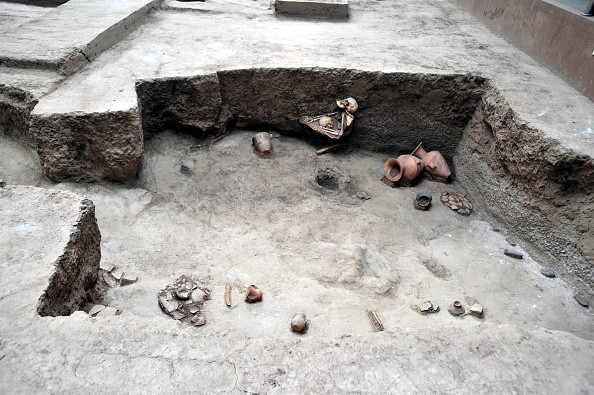Geologist and archaeologists in China have traced evidence of a massive flood that devastated the upper Yellow River valley, around 4,000 years ago. According to them, this may establish the historical basis of Xia dynasty, China's first dynasty.
Some records, mentioned in ancient Chinese texts relating to its second and third dynasties, were confirmed when archaeologists discovered inscriptions on oracle bones and ancient bronzes. Xia dynasty's records present in the tales about a great flood similar to the one in Noah's day, suggests that the legendary hero Yu earned the mandate of heaven to become the emperor of the country's first dynasty after taming the floods. It is said he dredged canals to dispel the flooding Yellow River and made the land safe.
This is the story, due to which Chinese believe that their civilization began with emperor Yu. But historians have long been considering this account of the flood as a creation-style myth. Some have dismissed the story of Emperor Yu as fiction due to lack of evidence which suggests massive floods.It is thus, for long the stories of the Xia dynasty remained more of a myth than history.
Under the leadership of Qinglong Wu of Beijing's Peking University, a team of archaeologists and geologists has now discovered significant evidence of a catastrophic flood that they say could be the Great Flood mentioned in the ancient Chinese texts.
The flood happened due a landslide caused by an earthquake, that opened a colossal natural dam across the Yellow River which traveled through the Jishi Gorge. The emergence of the same is believed to be from the Tibetan plateau. The remaining sidewalls suggest that the dam would have risen some 800 feet above the present level of the river, the Science reported.
While the report of Wu's team claims that the accumulation of water in a new lake behind the dam, slowly and gradually resulted in water bestriding the dam's crest due to which the dam began to rapidly release up to 3.8 cubic miles of water. This led to one of the largest floods witnessed by humankind in the last 10,000 years. The team estimated that the outburst of flood wave was so strong that it could have traveled as far as 1,250 miles downstream, resulting in extensive flooding and making the Yellow River change its course.
It is hard to date an event like a flood. But the same earthquake that caused floods provided a date. It destroyed a village called Lajia, which was some 16 miles away downstream. Dr. Wu's team claimed that the flood occurred the same year as the earthquake, the New York Times reported.
The date offers a temporal link to the China's first dynasty. The dynasty is thought to have started at this very time if it existed. Two scholars working from Chinese astronomical records have calculated that the dynasty began in 1914 B.C. Their basis is a statement that there occurred a close conjunction of five planets during the early part of the emperor Yu's reign.



























